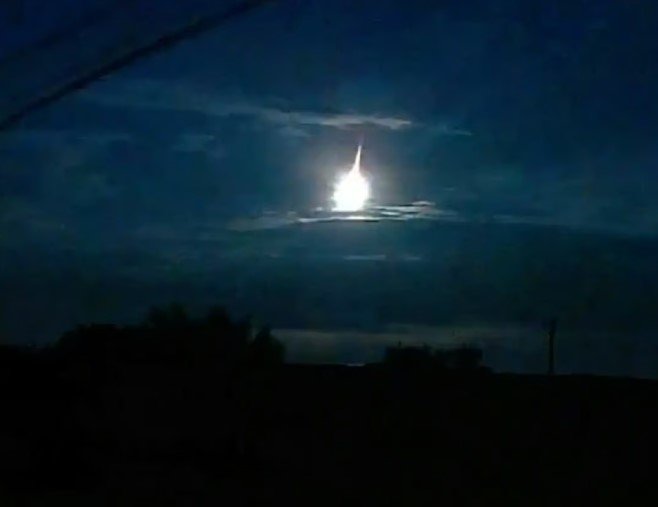A stunning fireball streaked across the night sky over southern Japan on August 19, 2025, turning darkness into day for a brief moment. Witnesses in cities like Kagoshima, Kumamoto, and even Osaka reported seeing the bright object around 11 p.m. local time, with footage capturing its dramatic path over the Pacific Ocean.
This event drew quick attention from locals and experts alike. The fireball released energy equal to 1.6 kilotons as it burned up, creating a spectacle visible from multiple prefectures. People shared videos on social media, showing the meteor’s green-blue glow and final orange flare before it broke apart.
What Eyewitnesses Saw
Many residents described the fireball as a rare and thrilling sight. One driver in Miyazaki said the light was so intense it outlined nearby houses like midday sun. In Kagoshima, the meteor lit up the famous Sakurajima volcano, adding to the dramatic view.
Surveillance cameras at airports in Fukuoka, Matsuyama, and Kagoshima caught clear images. Dashcam videos from Kumamoto showed the object streaking southwest, flashing brightly before fragmenting near the horizon. Social media buzzed with posts from Osaka, where people at Kansai Airport spotted it from over 120 miles away.
Experts noted the fireball’s path over the Pacific, where it likely disintegrated about 18 kilometers above the ocean. No reports of damage or meteorite fragments surfaced, but the event sparked widespread awe.

Scientific Details Behind the Event
Fireballs occur when space debris enters Earth’s atmosphere and burns up from friction. This one was larger than typical meteors, shining brighter than planets and earning its fireball label.
Data from observation tools recorded air vibrations shortly after the sighting, confirming the meteor’s power. Its energy release matched small explosions, but it posed no threat on the ground.
The Perseid meteor shower was active around this time, known for producing bright displays. However, scientists say this could be a sporadic meteor, not tied to the shower. Random space rocks hit the atmosphere often, but ones this vivid are less common.
Here’s a quick breakdown of key facts:
- Time and Date: August 19, 2025, at 11:08 p.m. JST
- Locations Seen: Kagoshima, Miyazaki, Kumamoto, Fukuoka, Matsuyama, Osaka
- Energy Released: 1.6 kilotons
- Altitude of Breakup: Around 18 km above the Pacific Ocean
- Colors Observed: Green-blue flashes turning to orange-red
How It Compares to Past Events
Japan has seen similar fireballs before, often linked to meteor showers or random debris. In 2020, a bright meteor lit up western and central Japan, visible at 1:35 a.m. and drawing comparisons to a full moon.
More recently, a Perseid meteor in August 2024 illuminated Makurazaki City, captivating viewers. These events remind us of ongoing cosmic activity, with Earth’s atmosphere acting as a shield against space rocks.
Globally, fireballs happen worldwide. A green one streaked over New York in recent years, and another exploded over China in May. Such sights entertain skywatchers and help scientists track near-Earth objects.
| Year | Location | Key Details |
|---|---|---|
| 2020 | Western Japan | Lit up night sky, seen across regions, compared to full moon |
| 2024 | Makurazaki, Japan | Perseid meteor, bright illumination over city |
| 2025 | Southern Japan | 1.6 kiloton energy, green-blue to orange, fragmented over Pacific |
| Recent | New York, USA | Vivid green fireball, captured on video |
| May (recent) | China | Brilliant explosion, turned night to day |
Why These Events Matter
Beyond the excitement, fireballs offer clues about our solar system. They come from ancient debris left from its formation billions of years ago. Studying them helps predict potential impacts and understand cosmic risks.
For everyday people, these moments connect us to the universe. They inspire stargazing and sharing stories, turning a quick flash into lasting memories. With meteor showers like the Perseids peaking in August, more displays could follow.
Experts urge reporting sightings to groups tracking meteors. This data builds better models of space debris patterns.
If you saw the fireball or have footage, share your experience in the comments below. Did it surprise you? Pass this article along to friends who love space news, and let’s discuss what might come next in the skies.
